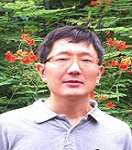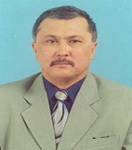Day 2 :
Keynote Forum
Masahiro Yoshimura
National Cheng Kung University, Taiwan
Keynote: Importance of soft processing(=Low-Energy Production) of advanced inorganic Materials for sustainable society

Biography:
Yoshimura is the Chair Professor (Distinguished) at Mater. Sci. & Eng., PCGMR, NCKU since 2010. He earned D.Sc. in Tokyo Inst. of Tech., Japan in 1970. In 1973-1977, he was a Pos-Doc. researcher in CNRS Labs., Odeillo, Orleans and Vitry-sur-Seine, France and M.I.T., USA. In 1978, he was an Associate Professor, then Professor (1985) in Tokyo Inst.Tech. till became a Professor Emeritus in 2008. He has worked on Phase Equilibria of Zirconia, Rare Earth Oxides, and Hydrothermal/Solution Processes of Zirconia, HAp, BaTiO3, LiCoO2, and Nano-Carbons,etc. He has >700 peer-reviewed papers, >16,500 citations and h-index > 60 as an ISI Highlycited Researcher since 2004.
Abstract:
As well as organic and/or bio- materials, advanced inorganic materials, most of metallurgical materials, semiconductors and ceramic materials are importanr, but they have never been produced in natural biological systems. Thus they have generally been fabricated artificially and/or industrially by so-called high-technology, where high temperature, high pressure, vacuum, molecule, atom, ion, plasma, etc. giving environmental impacts, particularly for nanostructured advanced inorganic (ceramics) materials.rnConsidering the lowering of total energy consumption, we have challenged to fabricate those advanced inorganic materials with desired shape/size/location, etc. directly in low energetic routes using aqueous solutions since 1989 when we found a method to fabricate BaTiO3 film on Ti substrate in a Ba(OH)2 solution by Hydrothermal Electrochemical[HEC] method at low temperatures of 60-200 C. We proposed in 1995 an innovative concept and technology, “Soft Processing” or “Soft Solution Processing,” which aims low energetic (=environmentally friendly) fabrication of shaped, sized, located, and oriented inorganic materials in/from solutions. When we have activated/stimulated interfacial reactions locally and/or moved the reaction point dynamically, we can get patterned ceramic films directly in solution without any firing, printing, masking nor etching.  We have succeeded Direct Patterning of CdS, PbS and CaWO4 on papers by Ink-Jet Reaction method, furthermore, to fabricate BaTiO3 patterns on Ti by a laser beam scanning and carbon patterns on Si by a needle electrode scanning directly in solutions. TiO2 and CeO2 patterns by Ink-Jet Deposition, where nano-particles are nucleated and grown successively on the surface of substrate thus become dense even below 300 C will be presented. 2D and 3D Nano-structured films will be also talked. A recent novel subject, Soft Processing for various nano-carbons including Graphene and functionalized Graphene, will be introduced. rn
Keynote Forum
Debes Bhattacharyya
University of Auckland, New Zealand
Keynote: Effects of biomass types on flammability and mechanical properties of sustainable biochar based composites

Biography:
Professor Debes Bhattacharyya is a Distinguished Professor (holds a Personal Chair) in the Department of Mechanical Engineering and has been the founding Director of the Centre for Advanced Composite Materials (CACM) at the University of Auckland, since 2004. He also holds an Adjunct Professor position at Washington State University, Pullman, USA. Professor Bhattacharyya was the Head of Mechanical Engineering Department from 1999 to early 2005. His current research interest primarily includes the mechanics and manufacturing of composite materials. He has delivered more than 50 keynote/plenary/invited lectures at different conferences and technical gatherings around the world and has served on the Editorial Advisory Boards of eight international journals and is the Associate Editor of J. of Nano and Smart Materials. Prof. Bhattacharyya has about 450 scientific/technical publications including several edited/authored books and a number of book chapters. He has successfully implemented several international patents. He is a Fellow of the Royal Society of NZ and a Distinguished Fellow of the Institution of Professional Engineers NZ. For his international academic achievements he has recently been awarded an honorary ‘Doctor of Engineering’ (honoris causa) by the University of Southern Queensland, Australia. In 2012, he was also awarded by IPENZ the Supreme Technical Award (John Cranko Award) for his professional and academic contributions in Mechanical & Manufacturing Engineering.
Abstract:
The main aspects of green and sustainable chemistry are employment of renewable materials and effective utilisation of organic wastes. In the light of application of renewable materials, biochar aptly fits the paradigm due to the fact that it is a by-product of thermochemical conversion of organic waste biomass. On the other hand, organic wastes with the potential to degrade, aided by bacteria, can generate harmful greenhouse gases or leachates. Therefore, for the purpose of reducing pollution, conserving resources, and saving energy, it is required to reuse and recycle organic wastes. Various types of organic waste, such as sunflower/corn stalks, rice husks, wool, waste paper sludge, have already been used to manufacture biocomposites in the past. However, the synergistic behaviour of these organic wastes and biochar in a biocomposite is not yet fully understood. Therefore, four different biomass wastes (rice husk, coffee husk, wool and wood) were added with polypropylene (PP) and pinewood waste derived biochar to manufacture sustainable biocomposites. The biochar was characterised chemically using infrared spectroscopy (FT-IR) and X-Ray diffraction (XRD). It was observed that the biochar lacked surface functional group as no visible peaks appeared in FT-IR spectra. The XRD spectra illustrated the amorphous nature of the biochar having some degree of early short range order. The presence of turbostratic carbons in the biochar resulted in the hump at about 25o (2ÆŸ). The biocomposites were analysed for their thermal/flammability properties using cone calorimeter, thermogravimetry (TGA) and differential scanning calorimetry (DSC). Their tensile and flexural properties were also measured using Instron universal testing machine. From the DSC it was observed that addition of biochar and biomasses did not restrict the flow of PP but, nonetheless the particles acted as nucleating agents aiding crystal growth and consequently causing an earlier onset of crystallisation. In TGA studies, all the biocomposites were seen to have two events of decomposition, one at 330-370 °C and the other at 412-490 °C. The first decomposition was due the degradation of cellulose in the biomasses (breakage of microfibril-matrix structure in wool) whereas the second decomposition was represented by the degradation of PP. It is interesting to note that due to the higher thermal stability of biochar, the decomposition events were delayed compared to neat biomass and PP. From the cone calorimeter, it was observed that the peak heat release rate (PHRR) of the wool based biocomposite was the highest (596 kW/m2) and that of coffee husk added biocomposite was the lowest (394 kW/m2). Although the neat rice husk had a lower PHRR than that of neat wood, its biocomposite exhibited higher PHRR (501 kW/m2) than wood based biocomposite (449 kW/m2). Among the different biocomposites, wood based sample had the highest tensile/flexural strength (36 MPa/67 MPa) and flexural modulus (4.4 GPa). Its tensile modulus (4.73 GPa) was second to that of rice husk based biocomposite (4.87 GPa). Production of biochar retains the structure of the parent feedstock (in this case, pinewood). Therefore, it is possible that the biochar and wood were physically compatible with each other in the PP matrix through a lock and key mechanism. The compatibility of wood with the biochar, the good interfacial bonding of wood and PP matrix, and the mechanical interlocking of biochar and PP led to the better mechanical properties of wood based biocomposite. These conclusions have been supported by scanning electron micrographs. This study has clearly established the possibility of using biomasses as filler materials in biochar-based polypropylene composites if the processing is carried out to an extent under controlled conditions.
Keynote Forum
Lakshmi Kantam Mannepalli
Institute of Chemical Technology, India
Keynote: Catalysts, key to a sustainable future

Biography:
Lakshmi Kantam Mannepalli was the Director of the Indian Institute of Chemical Technology and presently serving as Dr. B. P. Godrej Distinguished Professor of Green Chemistry at ICT, Mumbai. She has published more than 320 papers in highly reputed journals and serving as an Editorial Board Member of The Chemical Record, Journal of Chemical Sciences and the Open Catalysis Journal. She has more than 50 patents to her credit. Her area of interest is design and development of new catalysts and their application towards innovative green processes. She is a J. C. Bose National Fellow (DST-GOI). She is also a Fellow of National Academy of Sciences (FNASc), Fellow of Indian National Academy of Sciences (FNA) & Fellow of Royal Society of Chemistry (FRSC) for her scientific achievements in the area of catalysis.
Abstract:
Today’s society needs to prepare itself for a more healthy future with food for all and plenty of energy and resources to fuel our growing prosperity. Chemistry is ready to take on this global challenge. In particular, catalysis is a crucial discipline when it comes to providing the scientific and technological foundation for making cleaner, efficient and economically viable chemical processes. Catalysis is the essential chemical phenomenon that underlies all living systems and is a key to creating sustainable processes and a greener environment. Catalysts accelerate chemical reactions and efficiently channel energy into building complex molecular structures. The ability to perform specific reactions with great precision through millions of cycles is the basis of sustainable processes. Thus the concepts of sustainability can be clearly illustrated using examples of natural and manmade catalytic processes. Natural catalytic cycles such as the photosynthetic production of carbohydrates are made possible through enzymes. The efficient conversion of oil, gas, coal and biomass into fuels and chemicals is made possible by modern catalytic technology. In this lecture, role of catalysis and its contribution for sustainable development of the future will be discussed. Nanotechnology may change the landscape of chemical industries. Nanomaterials are playing a significant role in diverse fields of chemistry, physics, biology and materials science. The novel physical and chemical properties of nanomaterials promise many advanced applications in the development of new energy and chemical conversion technologies. Highly selective catalysts may help reduce the energy consumption required for product separation and waste disposal processes in chemical industries. Nanostructured metal oxides are widely used in catalysis where the acidic/base properties and the catalytic activities are closely related to the size and morphology of the oxides. Reactive nanocrystalline metal oxides are newly discovered materials that could change dramatically the way these organic transformations are carried out. These high reactivities are due to high surface areas combined with unusually reactive morphologies. For the last few years, we have been exploiting the different nanocrystalline metal oxides (ex., MgO, CuO, ZnO, TiO2 etc.,) for a number of organic reactions viz., Claisen-Schmidt, Wadsworth-Emmons, Wittig, aldol, asymmetric epoxidation, Henry, Michael and asymmetric hydrosilylation, C-H activation reactions etc. Overview of our work on nanocrystalline metal oxides based catalysts for the synthesis of fine chemicals will be presented.
- Track 2: Green Chemistry Applications
Track 14: Green Materials and Marketing
Location: Embassy Suites Las Vegas

Chair
Yoshitomi Morizawa
Asahi Glass Co., Ltd., Japan

Co-Chair
Febee R Louka
University of Louisiana, USA
Session Introduction
Febee R Louka
University of Louisiana, USA
Title: Investigating the efficiency of economical adsorbents in removal of polycyclic cyclic aromatic hydrocarbons

Biography:
Febee Louka has completed her PhD in 2004, from Ohio University in Analytical Chemistry. She is Associate professor in Analytical/Environmental Chemistry, University of Louisiana at Lafayette. She is a CoPI in $1,025,000 grant on effect of oil spills. She was awarded the Summer Research Award 2012 and the Outstanding Undergraduate Research Mentoring 2014. She is also the awardee of Marvin and Warren Boudreaux / BoRSF Professorship in Chemistry (2012-18). She was awarded the Outstanding Teaching Award College of Sciences 2016. She has published more than 59 papers and presentations in peer reviewed journals and National and International meetings.
Abstract:
In this study we were investigating the effect of ecofriendly adsorbents in case of polycyclic cyclic aromatic hydrocarbons (PAHs) contaminated areas. Some of these PAHs can cause oxidative DNA damage. The waste produced in Louisiana such as sugarcane (Saccharum officinarum) bagasse, crawfish (Procambarus clarkia) and satsuma (Citrus unshiu) shells were used as low cost ecofriendly adsorbents. These adsorbents were examined in the removal of the PAHs which are the main components of oil spills. Each water sample was dosed with a known concentration of the PAH under investigation. In this study the PAHs that were tested are pyrene, chrysene and benzo(a)pyrene. Several variables were tested, such as using different amounts of each ecofriendly material on the adsorption of the PAH. A known amount of the adsorbent was added to the dosed water followed by shacking. The analysis of water samples were performed using liquid-liquid extraction and comparing the quantified concentration of PAH to that of a blank which contained no adsorbent. The sample was then concentrated under nitrogen, followed by injection into gas chromatography-FID. The intervals of shacking, temperature and particle size effect on the efficiency of extraction were also examined. The results indicated that adsorbents had significant efficiency to minimize the concentrations of pyrene, chrysene and benzo(a)pyrene in the water samples. The results also showed that the amount of adsorbent as well as the time of incubation had a great effect on the adsorption efficiency. The data obtained showed different extents of adsorptions for the individual PAHs under investigation
Maria Fátima das Graças Fernandes da Silva
Federal University of São Carlos, Brazil
Title: An environmentally friendly procedure to quantify and localize cedrelone in Spodoptera frugiperda after feeding with this limonoid

Biography:
Full Professor of Chemistry, Federal University of São Carlos, 2005 – present. Associate Professor of Chemistry, Federal University of São Carlos, 1978 – 2005, Assistant Professor of Chemistry, Federal University of São Carlos, 1976 – 1978, Postdoctoral Fellow, University of Strathclyde, Glasgow, Scotland-U.K, under the guidance of Professor Peter G. Waterman in Feb./87 to Jun/89. The central theme of my research is isolation and structure elucidation of plant secondary metabolites and the application of findings on numerous biological screening and in ecological and phylogenic studies. Research has generally been centred on the Rainforest of Brazil with particular reference to Sapindales plant families.
Abstract:
Our group investigated the effectiveness and safety of plant extracts as potential natural pesticides for use as possible alternatives for synthetic pesticides that are intensively applied in many plantations in Brazil. In bioassays with ethanol extracts from more than 50 plants, Toona ciliata (Meliaceae) was the most toxic against Spodoptera frugiperda in the lab. Chemical analysis revealed the presence of the active ingredient cedrelone in the stems. It was isolated and assayed against S. frugiperda and evaluated the Cumulative Mortality via the incorporation of this compound into the artificial diet. The activities were comparable to that of the synthetic insecticides. However, its primary modes of action remained unclear. It has been hypothesized that it may inhibit acetylcholinesterase enzyme activity. Cedrelone was observed to cause strong inhibition of the acetylcholinesterase enzyme from S. frugiperda. The purpose of this work was also to apply the mass and nuclear magnetic resonance spectroscopy, a green analytical method which require small amount of solvent, for determination of cedrelone in hemolymph, midgut, head and faeces from S. frugiperda. Cedrelone was detected in the head, intestine and in the excreted faeces. MS spectra showed the presence of intact cedrelone and indicated change in its structure. Quantitative analysis via MS/MS indicated that more than 50% of cedrelone was metabolized. From this study, we conclude that the acetylcholinesterase inhibition is likely the primary mode of action for insecticidal activity by cedrelone.
Mauricio Rostagno
University of Campinas (UNICAMP), Brazil
Title: Biorefineries for valorization of food and agricultural residues using advanced technologies

Biography:
Mauricio A. Rostagno has obtained his PhD from University of Cádiz (Spain) and postdoctoral studies from University of Campinas (UNICAMP) at the School of Food Engineering. He is an Assistant Professor of the School of Applied Sciences of UNICAMP lecturing about food composition and analysis. He has published more than 39 papers in reputed journals, and also edited the book “Natural product extraction: principles and applications” published by Royal Society of Chemistry.
Abstract:
The agri-food industry produces large amounts of wastes in their daily activities that are usually disposed without further usage, including peels, bagasse, pulp, seeds, leaves, husks, etc. However, most of the “wastes” from such activities still contain large quantities of valuable chemical compounds, such as oils, antioxidants, coloring and flavoring agents, carbohydrates, etc., that find applications in nutrition, medicine, food technology, chemical engineering and energy, among other areas. In the context of a biorefinery, one of the main objectives is to maintain an optimal balance between increases in manufacturing output and costs while minimizing the environmental impact of the industry. The integration of advanced processes based on supercritical fluids allows obtaining several different products sequentially from the same raw material (derived from the main activity) using environmentally friendly processes. By exploring temperature and solvent polarity gradients and green solvents (water, ethanol, CO2, etc.) specific compounds with a wide range of polarity (from hydrophobic oils to hydrophilic coloring agents) are selectively removed producing highly concentrated extracts. Other processes using supercritical fluids may also be integrated into the biorefinery to produce nanoparticles and to reuse the solvent. From the residue generated by the extractions is also possible to separate lignin from cellulose and hemicellulose and perform the hydrolysis to produce phenolic compounds and fermentable sugars. The remaining solid can then be subjected to gasification producing hydrogen or methane. Case studies of this strategy applied to natural products (sugar cane, pressed palm, turmeric and grapes) are presented to illustrate the concept.
Quansheng Chen
Jiangsu University, China
Title: Emerging green analytical tools for food quality and safety

Biography:
Quansheng Chen earned a PhD from Jiangsu University China, and now he is currently a full professor of Jiangsu University China. His current research interests is emerging green analytical methods for food quality and safety. He received the 2nd Prize of National Award of Technological Invention of China, and the ProSPER.Net-Scopus Award for Asia-Pacific Young Scientist in 2011, etc. He has authored >200 peer-reviewed scientific papers in the preputed journal and 3 books, and holds >30 patents. Currently, he has been serving as the editorial members of 3 reputed journal.
Abstract:
Public attention in food quality and safety has increased significantly in recent decades, due in part to changes in consumer behavior and the gradually increasing food consumption. Demand for high quality of food obviously requires high standards of quality assurance and process control; satisfying this demand in turn requires appropriate analytical tools for monitoring food quality and safety. Green analytical tool, as an alternative to conventional analysis methods for food quality and safety, has the desirable features in terms of operating speed, ease-of-use, minimal or no sample preparation, and avoidance of sample destruction. This paper reviews recent developed green analytical toos, such as near infrared (NIR) spectroscopy, electronic tongue (E-tongue), electronic nose (E-nose), hyperspectral imaging, biosensors, integration of multiple sensors, and latest research efforts to assess food quality and safety. Particularly, we have reviewed some related data processing algorithms involved in each green analytical tool. Finally, we provided the technical challenges and outlook for the application of these green analytical technologies in analysis of food quality and safety.
Sridevi Chigurupati
AIMST University, Malaysia
Title: Green chemistry - not a solution but the most fundamental approach to prevent pollution

Biography:
Sridevi Chigurupati has completed her PhD in pharmaceutical sciences at the age of 29 years from JNTU University, India. Her area of research is synthetic and Green chemistry. She has more than 11 years of experience in academics and research. At present she is the working as Senior lecturer in AIMST University at Malaysia. She has delivered her talk on her present research projects on Green chemistry at various conferences in California, India and Dubai. She has published more than 25 papers in reputed journals and has been serving as a reviewer and editorial board member for many reputed journals like Medicinal Chemistry Research, Journal of Applied Pharmaceutical Sciences, Journal of Pharmacognosy and Arabian Journal of chemistry.
Abstract:
Chemistry is incontestably a very prominent part of our daily lives. Chemical progresses bring new environmental complications and harmful unexpected side effects, which result in the need for ‘greener’ chemical products. The application of green chemistry principles in academics and industries can therefore be a significant prospect to enhance our positive impact on the global community. Green chemistry can be defined as the invention, design and application of chemical products and processes to reduce or eliminate the generation of hazardous substances. This presentation is a strategy towards sustainable development and with an aim to create a ‘Greener World.’ The success of the modern pharmaceutical industry is firmly built on the remarkable achievements of organic synthesis over the last century. However, the down side is that many of this time - honored and trusted synthetic methodologies were developed in an era when the toxic properties and the issues of waste minimization and sustainability were largely unheard of. The concept of benign by design started in mid-1990’s that is designing environmentally benign products and processes to address the environmental issues of both chemical products and the processes by which they are produced. This integrated the conceptions of atom economy and E- factors eventually became a guiding principle of Green Chemistry. Another concept which has become the focus of attention, both in industry and society at large, in the last decade or more is that of sustainable development, meeting the needs of the present generation without compromising the ability of future generations to meet their own needs. Sustainable development and Green Chemistry have now become a strategic industrial and societal focus, the former is our ultimate goal and the latter is a means to achieve it. On conclusion, it is clear that the challenge of sustainability and Green Chemistry is leading to fundamental, game changing innovations in organic synthesis that will ultimately lead to economic, environmental and societal benefits in the pharmaceutical industry and in the chemical and allied industries at large. Green chemistry is not a solution to all environmental problems but is the most fundamental approach in preventing pollution.
Lakshmi Kantam Mannepalli
Institute of Chemical Technology, India
Title: Design and development of catalysts for the synthesis of fine chemicals

Biography:
Lakshmi Kantam Mannepalli has completed her PhD from Kurukshetra University, India. She was the Former Director of the Indian Institute of Chemical Technology, Hyderabad, a premier scientific research organization and presently serving as a Professor of Green Chemistry at ICT, Mumbai. She has published more than 320 papers in reputed journals and serving as an Editorial Board Member of the Chemical Record and Journal of Chemical Sciences. She has received several prestigious awards and honors including Fellow of National Academy of Sciences (FNASc), 2008; Fellow of Indian National Academy of Sciences (FNA), 2014 and Eminent Scientist Award-Catalysis Society of India, 2015 for her overall scientific achievements in the area of catalysis.
Abstract:
Catalysis is a highly demanding technology for sustainable society and drives innovation in many other fields. Today over 90% of all industrial chemicals are produced with the aid of catalysts. World catalyst demand is forecast to grow to $24.1 billion through 2018 and presently it is around 16.3 billion dollars. The catalysis of organic reactions by homogeneous and heterogeneous catalysts remains a vibrant field of scientific inquiry. Our research group is devoted to developing innovative green processes for the synthesis of fine
chemicals employing catalysts that achieve highest possible atom economy. Over the years, our studies have led to cutting edge technologies that meet stringent environmental specifications in pollution abatement. We have made significant contributions towards the development of various novel solid acid/bases, homogeneous/heterogeneous catalysts, nanomaterial based catalysts for alkylation, acylation, nitration, bromination, hydrogenation and oxidation reactions. Hydroxyapatite (HA) is a hydrated calcium phosphate material, which is an important biomaterial because of its similarity to the mineral component of mammalian bone. We have utilized these materials and their metal exchanged materials as catalysts for C-C and C-N coupling reactions. Similarly, hydrotalcites, anionic clays have been exchanged with different metal ions and successfully applied in a number of organic transformations for example: Osmium exchanged hydrotalcites in asymmetric dihydroxylation; palladium exchanged catalysts for Heck-, Suzuki-, Sonogashira-, Stille type coupling reactions and C-C coupling reactions. In the talk, I will present a brief description of the details of the some of the reactions and also the processes demonstrated to industries.

Biography:
Abstract:
Hajime Hirao
Nanyang Technological University, Singapore
Title: Computational studies of catalytic reactions in various platforms: From organic reactions to metal-organic frameworks

Biography:
Hajime Hirao received his BS and MS degrees from Kyoto University and his PhD from The University of Tokyo. He did his postdoc at The Hebrew University of Jerusalem, Emory University, and Kyoto University. He is currently an assistant professor at Nanyang Technological University, Singapore. He is particularly interested in theoretical aspects of chemical reactions. Before starting his postdoc training, he also worked for three years on computer-assisted drug design at Novartis in Japan. These have made his research interest lie primarily in the application of computational chemistry to chemical reactions in bioinorganic chemistry, homogeneous/heterogeneous catalysis, and medicinal chemistry.
Abstract:
Even though chemistry is divided into many subdisciplines for practical reasons, the physical principles used in computational chemistry underlie all branches of chemistry. In addition, to make finally developed reactions as well as even research phases greener, today, it is inevitable that computational chemistry is used in various scenes. Hence, computational chemistry has unlimited potential to contribute to the advancement of chemistry in a broad context. With this in mind, we are applying quantum chemistry, multiscale QM/MM models, and many other advanced computational chemistry techniques to a variety of complex molecular systems such as metalloenzymes, porous materials, transition-metal catalysts, drugs/drug targets, porous coordination polymers/metal-organic frameworks, and nanomaterials. In particular, using computational approaches and often with experimental coworkers, we seek to derive key insights into chemical reaction mechanisms and bonding patterns of complex molecules.

Biography:
Andrew C Flick has completed his Bachelor’s degree in Chemistry from Lake Forest College. In 2001, he joined Array BioPharma in Longmont, CO. He has then joined Albert Padwa Laboratory at Emory University in Atlanta, Georgia. After his Doctorate study he joined Pfizer and has worked on Small Molecule Drug Discovery projects within the neurosciences, rare diseases and inflammation & immunology therapeutic areas. He has authored over 25 peer-reviewed publications and several patents.
Abstract:
In the past decade, many organizations and institutions worldwide have recognized the importance of green-chemistry practices for a wide variety of applications. This shift is being driven by the realization that processes that is cost-effective, environmentally superior and delivers a competitive advantage. However, success depends on developing a culture of sustainability within an organization regardless of sector (e.g., academic, governmental or industrial). Staff at all levels from management to lab scientists need to understand the concepts of green chemistry and how they might be embraced to everyone's benefit. The focus of the workshop will involve the Seven Guidelines to Green Sustainability at the Organizational Level as outlined nicely by Tucker and Faul, empowering champions, raising awareness, expand collaborations, define metrics, recognize achievements, invest in technology and promote outreach. The purpose of the workshop is to identify specific actions and/or initiatives that can help embed Green principles within an organization and the output will be for the groups to share their proposals, actions or initiatives that have been proposed or successfully enabled already within their organizations that either can or have furthered attention to GC within their organizations.
Brajadulal Chattopadhyay
Jadavpur University, India
Title: Genetically modified Bacillus subtilis bacterial strain for self-healing and sustainable green bio-concrete material

Biography:
Brajadulal Chattopadhyay is currently working in the Department of Physics, Jadavpur University, India. Prof. Chattopadhyay completed his Master (1987) and PhD (1994) degrees from the University of Calcutta, India and worked at Bose Institute, India and Technical University of Delft, the Netherlands as postdoctoral fellow. He has been working in the field of Bioconcrete development by using an anaerobic bacterium to enhance the strength and durability of concrete structures since 2001 and published his work in many internationally reputed journals. He has already supervised 15 PhD students and hold one National and two International patents in his research career.
Abstract:
Development of smart bio-concrete materials has recently become an emerging area of research for construction purposes. In this exertion, the gene having silica leaching attribute has been transformed to a Bacillus subtilis bacterial strain and the transformed bacterial cells are utilized directly for higher strength and more durable green self-healing concrete structures. The silica leaching gene was fished out from the BKH2 bacterium, amplified by the PCR technique and cloned into Bacillus subtilis bacteria via a suitable T-vector for developing a novel bio-engineered Bacillus subtilis strain. The transformed bacterial cells when incorporated directly into mortar specimens produced high performance bio-composite materials. Improvements of compressive strength, ultrasonic pulse velocity and decrease in water absorption capacity along with increased sulphate resistance are noted in the bacteria amended mortars. It is established that the microbiologically induced new rod-like shaped Gehlenite (Calcium aluminium silicate) phase grow inside the cement-sand mortar/concrete matrices which is responsible for increment of strength and durability. This means in practice that a substantial part of the cement of mortar/concrete mixtures can be left out while still obtaining the necessary final strength. This would substantially improve the ecological footprint as cement causes massive CO2 emission during its production which affects the global climate negatively. Exploration of lucrative and easy methodologies for the development of bio-concrete materials using the novel bio-engineered Bacillus subtilis bacterial strain is therefore highly significant for commercial purposes which creates new hope for green and self-healing sustainable construction composites in the near future.
Huanhuan Li
Jiangsu University, China
Title: Dual-color bioconjugated upconversion fluorescent probes for simultaneous sensing two foodborne pathogenic bacteria

Biography:
Huanhuan Li has completed his master degree at the age of 25 years from Jiangsu University and pursue her PhD in Jiangsu University School of Food and Biological Engineering. He has published 8 SCI papers in reputed journals and has been published one paper in the journal of sub-nature (Scientific reports)
Abstract:
Rare earth-doped upconversion nanoparticles (UCNPs) possess peculiar frequency upconverting capabilities and high detection sensitivity qualities which present them as a potent alternative biosensor requisite for the detection of pathogenic bacteria. This paper reports a novel dual-color UCNP-based bacterium-sensing biosensor for Escherichia coli and Staphylococcus aureus detection simultaneously using UCNP as a fluorescence marker conjugated with antibodies as the specific molecular recognition unit. Dual-color UCNPs were fabricated via varying doped rare-earth ions to acquire the well-separated emission peaks. Dual-color UCNPs conjugated with antibody of E.coli and S.aureus for use as fluorescent probes. When E.coli and S.aureus were added into the reaction system, the fluorescent probes will capture the target bacteria through the specific binding of antibody, and then the fluorescence intensities decreased (∆I=Io-I) were observed to increase linearly with the concentration of the E.coli (664 nm) and S.aureus (806 nm) from 47 to 47×106 cfu mL-1 (y=199.45x-207.95, R2=0.98) and 64 to 64×106 cfu mL-1 (y=281.94x-116.19, R2=0.9657), respectively, resulting in the relatively low limit of 13 cfu mL-1 and 15 cfu mL-1 for E.coli and S.aureus, respectively. Furthermore, this UCNP-based bacterium-sensing biosensor was also could be successfully applied to simultaneous detect E.coli and S.aureus in adulterated meat and milk samples.
Zhiming Guo
Jiangsu University School of Food & Biological Engineering, China
Title: Development of on-line detection system for simultaneous assessment of edible quality and internal defect in apple by NIR transmittance spectroscopy

Biography:
Zhiming Guo has completed his PhD at the age of 33 years from China Agricultral University and postdoctoral studies from Jiangsu University School of Food & Biological Engineering. He is the director of Agricultural Engineering, and now is a lectuer in Jiangsu University School of Food & Biological Engineering. He has published more than 30 papers in reputed journals.
Abstract:
In order to simultaneous nondestructive on-line inspect edible quality and internal defect of apple, this work presents the development of an on-line detection prototype system using near infrared transmittance technology as a novel approach for on-line detect quality attributes without sample destructiveness. The on-line detection system was designed and developed to improve spectra signal quality, lower heat damage, reduce mechanical damage. Special detection software was developed for real-time inspection based on multithread programming technology. In this experiment, internal defects of apple caused by core rot fungi are collected and cultivated, because the natural internal defects apple sample is difficult to collect. We tried the preparation of samples and achieved good performance. It was achieved internal quality information in nondestructive online way by this system. Partial least squares -discriminant analysis (PLS-DA) models were developed to identify internal defects samples. The results obtained from PLS-DA models, in validation, gave a positive predictive value of classification about 91%. Moreover, predictive models were performed applying fast PLS regression algorithm to predict the soluble solid content (SSC) in apple. Very good results were obtained for SSC with R2 and RPD equal to 0.90 and 3.00, respectively. The results showed that the nondestructive on-line detection prototype based on NIR transmittance technique was feasible to simultaneous inspect the edible quality and internal defect of apple. The present research provides the foundation for the future development of an automatic system based on transmittance spectroscopy which is extremely important from the economic point of view.

Biography:
Reem Kamal Shah has completed his PhD at the age of 33 years from Umm Al-Qura University Makkah, Saudi Arabia. She is the director of analytical chemistry, faculty of science, Umm Al-Qura, Makkah. She has published more than 11 papers in reputed journals.
Abstract:
A new chromogenic reagent, meloxicam was used for highly sensitive, selective and rapid method for the determination of silver based on the rapid reaction of silver(I) with meloxicam. In the presence acetate buffer solution of pH 4.6 and Triton X-100 as an optimum medium, meloxicam reacts with silver to form a yellow complex of molar ratio 1:1 (silver to meloxicam). The molar absorptivity of the formed complex was calculated to be 1.124 x 104 L mol-1 cm-1 at 412 nm. Beer’s law is obeyed in the range of 1.0-15.0 μg mL-1. The relative standard deviation for six replicate samples of 7.0 μg mL-1 was 1.33%. The limits of detection and quantification were also calculated. Finally the repeatability, accuracy and the effect of interfering ions on the determination of silver ion were evaluated. The method was applied successfully for determination silver in some water samples.
Kamlesh Shrivas
Guru Ghasidas Vishwavidyalaya, India
Title: Direct-writing of paper based elctrodes using silver nano-ink for eletrochemical application: A greener aproach

Biography:
Kamlesh K. Shrivas obtained his Master degree in Chemistry (2000) and PhD degree in Chemistry (2004) from Pt. Ravishankar Shukla University, India. He worked as a quality control officer, Gharda Chemical Ltd., India (2005-2006). He worked as a post doctoral fellow at Tamkang University, TAIWAN and National Sun-Yat Sen University, TAIWAN (2006-2008), at Food Drug and Administration, USA (2008-2009), at Hamamatsu University School of Medicine, JAPAN (2009-2011). Since 2009, he has been an Assistant Professor at the Guru Ghasidas University, India. His current interests include the analytical development of chemical sensors for the detections of metal ions, drugs and biomolecules. In addition, imaging and identification of biomolecules (peptides, proteins, lipids and drugs) in tissue sample using mass spectrometry. He has published 44 research papers in highly impact journals and 3 book chapters.
Abstract:
To the best of our knowledge, to date there is no report for the synthesis of silver nanoparticles capped with oleylamine (AgNPs/OLA) and then use of NPs in the preparation of paper based conductive track for electroanalytical application. The synthesized OLA capped AgNPs was characterized with TEM, UV-visible, EDX, FTIR and TGA to know the size, composition and surface modification of NPs. The best electrical conductivity of printed electronic (0.11x 105 S cm-1) was obtained by applying a 10% AgNPs nano-ink solution on photo paper while keeping sintering temperature at 150oC for 60 min of sintering time. A conductive nano-ink was used to prepare electrodes (counter, reference and working) on photo paper and utilized in cyclic voltammetry (CV) measurement. In addition, we demonstrated the lighting of LED when conductive track was connected to a 1.5 V battery. The advantages of this paper-based flexible electrodes are user-friendly, cost effective and multiple analyses (> 50 times) in CV compared to other printed electrodes.
F. U. Okwunodulu
Ahmadu Bello University Zaria, Nigeria
Title: Kolanut pod husk: A potential biosorbent for Cd2+, Ni2+ and Pb2+

Biography:
Abstract:
Wasteswaters from industries should be treated before discharge. The pollution problems posed by toxic heavy metals to the environment have been a concern. The use of unmodified and mercaptoacetic acid modified kolanut pod husk as biosorbents in detoxifing Cd2+, Ni2+ and Pb2+ ions from aqueous solutions were investigated using a batch sorption process. Biosorption was carried out in a batch process at various contact time and dose with initial metal ions concentration of 100 mg/l using 250 µm size of the of the unmodified and modified kolanut pod husks respectively at a temperature of 25 0C and pH of 7.5. Maximum biosorption capacities of unmodified kolanut pod husk were observed at 3g, values given as 98.999 mg/g, 89.870 mg/g for Cd2+, Ni2+ and 89.890 mg/g for Pb2+ at 2g while that of modified kolanut pod husk indicated 99.952 mg/g at 2g for Cd2+ and 99.776 mg/g, 99.021 mg/g for Ni2+ and Pb2+ ions at 3g. More so at 60 minutes for Cd2+, 90 minutes for Ni2+ and 10 minutes for Pb2+, values given as 99.986 mg/g, 99.999 mg/g and 99.999 mg/g by the unmodified kola nut pod husk while modified kolanut pod husk gave 99.666 mg/g at 30 minutes for Cd2+, 99.664 mg/g at 30 minutes for Ni2+ and 96.164 mg/g at 90 minutes for Pb2+. Generally maximum biosorption were all favoured at low doses and at low contact time. The kinetic of metal ions biosorption on unmodified and modified kola nut pod husks have also been studied by fitting the data in Lagergren’s first-order, Ho-Mckay’s pseudo-second-order kinetics hypothesis and Elovich adsorption model. It was observed that the removal of metal ions over the biosorbent showed a better fit with the pseudo-second-order process and Elovich adsorption model than the pseudo -first-order. From this work kolanut pod husk had proven to be a good biosorbent for Cd2+, Ni2+ and Pb2+ .
Mohamed El-Far
Mansoura University, Egypt
Title: Green chemistry from ancient Egyptians using plants with sunlight, to recent research, using lasers and phytochemicals

Biography:
Mohamed El-Far, worked in biochemistry field for 40 years, published over 80 peer-reviewed papers. He received Fulbright and British council fellowships several times as well as German DAAD grant to establish PDT Program at Munchen, also received US-AID grant to establish PDT unit in Egypt.. He is serving on the editorial boards and Hon. Editor to three international journals. He acts as UNESCO expert in science and technology. Dr. El-Far served as visiting professor to University of California as well as Utah laser center also Mayo clinic for several years. He also served as a visiting professor to Cardiff and Swansea Universities, UK. He is a member of International Photodynamic Association and Royal Society of Chemistry, UK. Selected recently as expert and consultant for biochemistry in the national committee of suprime council of Universities in Egypt, which is the highest nation honor.
Abstract:
Ancient Egyptians were the first to adopt phototherapy in treatment of diseases. They used orally ingested plants containing light activated psoralens and sunlight to successfully treat vitiligo. Four thousand years later, psoralens – ultraviolet A (PUVA) was shown to be effective in treatment of psoriasis. Photodynamic therapy (PDT) is based upon using light, a photosensitizing drug, and molecular oxygen in combination. We will show scientific background of the origin of PDT and our use of it in diagnosis and treatment of certain types of cancers, experimentally as well as clinically. We will show and give an overview of 35 years long term team(s) experience in therapeutic potential of cancer-PDT. El-Far et al, were the first to use safer natural porphyrins as uroporphyrin and hepta-carboxylic porphyrin as a selective tumor localizing and photosensitizing agents in combination with Lasers. We were also the first to show the bio-distribution and selective in-vivo tumor localization of endogenous porphyrins induced and stimulated by a safer natural compound "5-aminolevulinic acid" (ALA) using a newly developed technique –based on green chemistry principles-for diagnosis of bladder cancer as well as treatment. We will present current state of art using cancer-PDT and Phytochemicals.
Dukjoon Kim
Sungkyunkwan University, South Korea
Title: Structure and properties of polymer electrolyte membranes based on poly(arylene ether ketone) for fuel cell application

Biography:
Dukjoon Kim received B.S. (1984) from Seoul National University, MS (1986) from KAIST, and PhD. (1993) from Purdue University. He worked at Lehigh University as a post-doctoral research associate and Hyundai Engineering Company as a researcher. Since 1994, he has been working in Sungkyunkwan University as a faculty member, and now he is a director of BK21 plus research group. He published about 170 SCI papers on polymer electrolyte membranes in energy generating and storage systems, novel functional mesoporous materials, and nanoparticles and hydrogels for biomedical application.
Abstract:
Sulfonated poly(arylene ether ketone) (SPAEK) fuel cell membranes were prepared in a variety of structures including cross-linked, random and multi-block copolymers to enhance dimensional and mechanical stability as well as proton conductivity. Hygroscopic mesoporous conductors were embedded in the membranes to lessen their dehydration in the low humid environment. Organosiloxane network was introduced to form interpenetrating polymer network (IPN) structures to adjust the elongational strength of the membranes. Synthesis of SPAEK and its precursor was confirmed using 1H-NMR spectroscopy and FT-IR spectroscopy. The effects of degree of sulfonation, hygroscopic conductors and organosiloxane network on several essential membranes properties such as proton conductivity, methanol crossover, and thermal and mechanical stability were analyzed. Those properties were correlated with the phase separation behavior investigated employing SAXS and AFM. The prepared SPAEK membranes were thermally stable up to 250oC without any chemical degradation. While the SPAEK membranes containing hygroscopic proton conductors exhibited superior conductivity to that of Nafion®117, those showed lower methanol permeability and no mechanical failure.
Bernabé L. Rivas
University of Concepcion, Chile
Title: Polymeric materials with ability to interact with inorganic species with impact on the environment

Biography:
Bernabé L. Rivas, is Biochemist and PhD at University of Concepción. He was a post-doc University of Tübingen 1989-1991 by A von H Foundation, Germany. He is Vice-rector at University of Concepcion. Awarded Municipal Award of Sciences, Municipality of Concepción, Regional Award of Sciences, Regional Government, Macromolecules Division of Chilean Chemical Society Award. His main interests are preparation of ion exchange resins, polymer enhanced ultrafiltration, separation of arsenic, polymer-clay composite materials for metal separations. He authored/co-authored 380 publications and 27 book chapters. He is Editor of Journal of the Chilean Chemical Society, member of the Editorial Boards of Polymer International and the Open Macromolecules Journal.
Abstract:
Polymer-clay nanocomposites researches have presented a great attention from scientific community because nanocomposite materials present enhanced properties (mechanical, thermal, and barrier properties) compared with starting material (unloaded polymers). In case of crosslinked hydrophilic materials such as hydrogel and superabsorbent materials, the addition of clay could potentially result in either an increase or a decrease in the water absorbency. The former behavior is a consequence of the higher hydrophilicity that is provided by the clay layers, and the latter effect is due to an increase in the number of crosslinked points formed by the interaction of the polymeric matrix and the clay platelets. On the other hand, membrane filtration allows easily the separation of ions bound to water-soluble polymers from non-bound ions. This technique is known as the liquid-phase polymer-based retention (LPR) technique. Applications of water-soluble polymers (WSP)s to the homogeneous enrichment or selective separation of various metal ions from dilute solutions have been reported. In this talk, we present the study on the characterization and sorption performance of polymer-clay ion exchange resins, which are based on a polymer matrix bearing functional groups able to interact with contaminant oxyanions and layered double hydroxide (LDH) dispersed within the resin as well as the removal of inorganic pollutants through membrane filtration in conjunction with water-soluble functional polymers. The removal ability depended strongly on the pH and on the oxyanion. The removal behaviour under competitive conditions was also carried out.
Azamat Tynybekov
ISC NGO, Kyrgyz Republic
Title: Title: Hydrochemistry and ecological condition of Issyk-Kul Lake

Biography:
Azamat Tynybekov has 20 years and more of practical experience of active work in the field of the environmental security of the Kyrghyz Republic. He worked as the manager and the scientific head of the several International projects sponsored by CRDF (USA), INTAS ( European Union), NATO for the Peace Program, UNEP and UNDP. Scientific results of these international projects have been published in the International scientific magazines a kind 200 articles and more and 4 books, and also presented in a number of the International conferences in Europe and USA which are specified in my resume. Now, together with scientists from the USA, Greece, England, the Russian are prepared a number of projects for development of Issyk-Kul region as an ecological risk assessment, Cooperative Extension, Research of degradation of glaciers and water problems, Research of a condition of a phytoplankton of Issyk Kul Lake etc. Are published more than 200 articles and 4 books( Environmental security and nanotechnology)
Abstract:
Issyk-Kul Lake is represented by draining lakes, numerous rivers flowing down from the mountain tops, and lifting water. Lake with own size and depth of one of the greatest alpine lakes in the world. The clean mountain air, a variety of mineral springs, large stocks of therapeutic muds can actively use the lake shore for a spa treatment and rest. Natural factors of Issyk-Kul region well with picturesque landscape. High transparency and blue water, give a beautiful view of the lake is unique, that increases the prospects of tourism development, water and winter sports. In recent years, the attention to Lake Issyk-Kul is due to two reasons. The first is that the lake level is declining. Over the past 70 years, e 1927 to 1997, the reduction was 3.5 m mainly due to the increase of boron water for irrigation and partly through natural to the secular variations of the lake level. In connection with the development of agriculture in the Issyk-Kul Basin is a growing diversion of water from the rivers flowing into the lake: 1966 river water intake was 9% of river runoff in 1982. - 34%, in 1998. -43%.The second reason for the increased attention to the Issyk-Kul is associated with the practical activity of man - water pollution caused by the rapid development of recreation areas, construction, agricultural irrigation and livestock.
Krishna Chattopadhyay
Jadavpur University, India
Title: Potential efficacy of nano- curcumin against nicotine toxicated mammalian proteins

Biography:
Krishna Chattopadhyay has completed her PhD (Physiology) from University of Calcutta in 2002. She did her postdoctoral studies in the Department of Chemical Technology of Calcutta University and worked as a Women Scientist (WOS-A) in the same Department. At present, she is working as a Women Scientist (WOS-B) in DST project in the Department of Chemistry of Jadavpur University. She is also engaged as a guest faculty in the Department of Food Processing and Nutrition, IIEST, Shibpur. She has published many papers in reputed International Journals. Her field of interest is Pharmacology, Food and Nutrition and Natural Anti-oxidants.
Abstract:
Curcumin is a well-known anti-inflammatory and antioxidant agent that significantly reduces the nicotine-induced toxicity both at cellular and genetic levels. However, the poor aqueous solubility of curcumin makes it less bio-available that hinders the more possible remediation of curcumin against nicotinic abuse in the target cells. An attempt was made to synthesize nano-curcumin (20-50 nm) that would be more soluble in water with enhanced bioavailability. The prepared nanoparticles of curcumin (Cur-NPs) were characterized by Ultraviolet-Visible (UV-Vis) spectroscopy, Field Emission Scanning Electron Microscopy (FESEM), X-Ray Diffraction (XRD) and Zeta- sizer techniques. Investigations were performed on the structural modifications of nicotine-triggered two important mammalian proteins (α-lactalbumin; α-LA and Cytochrome-c; Cyt-c) via the interaction of concentration dependent curcumin nanoparticles. It was observed that nicotine significantly affected the structural conformation and optical properties of α-LA and Cyt-c proteins by modifying their structural integrity. Cur-NPs significantly regained the structural integrity of those nicotine-treated proteins as reveled by the results from UV-Visible absorption, Intrinsic Fluorescence Emission and Circular Dichroism (CD) studies. The Isothermal Titration Calorimetric (ITC) investigation demonstrated that Cur-NPs prevented the nicotine molecules for binding in the active site of those proteins. This was due to the greater binding affinity of curcumin towards α-lactalbumin (-4.87 KCal/mol) and Cytochrome c (-7.64 KCal/mol) proteins in comparisons to nicotine (-4.24 KCal/mol; ~ -5.26 Kcal /mol respectively) as observed in Molecular docking studies. This study clearly demonstrated that curcumin in its nano particulate form acted as an efficient ameliorative against nicotine-induced toxicity at cellular levels.
Kavita Shah
Banaras Hindu University, India
Title: Putting plant residue in use for dopamine estimation in human biofluids - a green technology

Biography:
Kavita Shah completed her PhD from Banaras Hindu University and is presently Director, Institute of Environment and Sustainable Development, BHU. She has contributed in the area of Environmental Biotechnology, Health and Water Resource Management. She has 70 publications, 02 patent/process, 12 GenBank/protein-model submissions to her credit. Dr Shah is a popular teacher. She received Women Scientist Award, BHU-Gold Medal, Japanese-STA-Fellowship, IUBMB Young Scientist Fellowship Award, Swiss Fellowship and Medhavi Chattra Puraskar. Her important contributions include developing dopamine biosensor; process for purification of rice-peroxidase; multi-stress tolerant tomato lines and Cd/Heat/Salt/SA/JA/NO-induced stress-signaling in rice under changing climate.
Abstract:
Sustainability and environmental safety management involves managing the natural resources optimally and with minimal impact on environment. Human-induced climate change has become a major focus of scientific research because of the potential catastrophic effects on biodiversity, food security and human communities. As a consequence corporate spending on environmental health and safety is increasing. A marked effect of climate change on the global scale demand more intervention of environmental biotechnology and green chemistry to understand the issues at micro-level. The formulation of adaptive strategies together with assessment of the impact of climate change forms the base for climate resilient agriculture globally. With this the cropping pattern of rice growing areas has changed and after harvest a large volume of rice plant residue is left behind which has limited use. This plant residue is rich in enzymes which remains untapped. The present work showcases the use of a plant residue for the development of a dopamine sensor for use of human subjects as a sustainable approach towards management of neurological patients without compromising with the food supply or nature at large.
Hendrik Spod
Technische Universität Darmstadt, Germany
Title: Ru/La2O3-ZnO as catalyst for the selective hydrogenation of benzene in a difficult four-phase system (G/L/L/S)

Biography:
Hendrik Spod, MSc is a 3rd year PhD Student at the research group of Prof. Claus at the Technical University of Darmstadt since 2013. He received his BSc in 2010 and his M.Sc. in 2012 at the Technical University Darmstadt in direction of heterogeneous catalysis.
Abstract:
The previously known processes of selective benzene hydrogenation to cyclohexene require high loadings of ruthenium supported on different metal oxides and large quantities of inorganic salts, organics or ionic liquids. This results in a difficult four-phase reaction composed of water, catalyst, organic phase and hydrogen (G/L/L/S).[1]The technical challenge in the design of a continuously operated reactor forming cyclohexene is the handling of the four-phase reaction, and furthermore to find a catalyst system without any additional additives.[2]
Using small amounts of ruthenium nanoparticles impregnated on a binary oxide (La2O3-ZnO) without further additives (organic or inorganic) shows yields of cyclohexene up to 30 % under optimized conditions in a batch reactor. The optimization was performed by the statistical software Design of Experiments.[3]Furthermore, we studied the influence of different preparation paramters and the catalysts were characterized by XRD, TEM and in situ XPS measurements. A special reaction set up allows an in situ observation of the reaction mixture during the reaction, showing the emulsion of this complicated four-phase system. The droplet size of the organic compound and the rate of hydrogenation are correlated with different stirring rates excluding mass transfer limitations.[4]Subsequently, the most effective catalyst was transferred to a specially designed continuous process to enhance high yields of cyclohexene over a period up to 250 hours.[5]

Biography:
Qin Ouyang has completed her PhD at the age of 27 years from Jiangsu University and works at Jiangsu University. She has published more than 20 papers in reputed journals.
Abstract:
Chinese rice wine sensory attributes, including color, aroma, taste and style, play a major role in product acceptability by directly influencing the success of a product in the marketplace. The estimation of the sensory attributes is generally done by human sensory analysis. However, the use of human for sensory evaluation entails several drawbacks, such as fatigue, stress and inconsistence etc. This study aimed to assess the feasibility of using near infrared (NIR) spectroscopy technique, as an instrumental evaluation technique, for predicting the sensory attributes (i.e., color, aroma, taste and style) in Chinese rice wine. Synergy interval partial least squares (Si-PLS) was used to select the optimal spectral intervals and construct models between the NIR spectra and the reference scores of each sensory attribute, respectively. The performance of model was evaluated by the correlation coefficient (Rp) and the root mean square error (RMSEP) in the prediction set. The optimal performance by the Si-PLS model for color was Rp = 0.8735, RMSEP= 0.274; the aroma was Rp= 0.8316, RMSEP= 0.893; the taste was Rp = 0.8791, RMSEP= 1.22; and the style was Rp= 0.7784, RMSEP= 0.557. This work demonstrated that the instrumental test using NIR spectroscopy technique has a high potential in predicting the sensory attributes in Chinese rice wine; it can overcome the drawbacks of human sensory analysis and achieve the objective measurements in a short time, in a consistent and cost-effective manner.
Birgül Benli
Istanbul Technical University, Turkey
Title: Iron-modified Ca-silicate sustainable adsorbent for arsenic removal from drinking water

Biography:
BSc.,MSc and PhD from Chemical Engineering at Istanbul Technical University. Post Doc. Visiting Researcher at University of Utah. Studies in Surface Chemistry, Filtration, Adsorption, Clays and clay based nano structures, Biodegradable polymers, Hybrid composite membranes, AFM modes in surface/interface studies, biohydrometallurgy and environmental effects, etc.
Abstract:
Arsenic level in natural water sources and rarely drinking water is a serious problem in the west regions of Turkey. Since natural mineralization causes arsenic contaminations, millions of people in more than 70 countries are also probably under the same risk of arsenic poisoning from drinking water. The maximum contaminant level (MCL) for arsenic was revised as 0.010mg/L (10 µg/L) by the United States Environmental Protection Agency (EPA). In the case of Emet and Hisarcik (in Kütahya, Turkey), the arsenic content of primary drinking waters and groundwater’s are determined as generally higher than MCL. High level of arsenic in natural waters was considered to be related with the formation of boron minerals in these regions where the world’s largest borate deposits ever discovered. Besides, an efficient and economic approach for water purification can be adsorption processes. The use of low cost adsorbents provides promising future research on novel porous materials such as synthetic calcium silicates. In this study, rice hull from a rice plant were used for the production of synthetic calcium silicates. Enhanced arsenic removal provided by iron modification of Ca-silicates was also investigated. Produced silicates were characterized by FTIR, X-ray, TGA, particle size and BET surface area analysis. Iron modified adsorbents were found to be completely amorphous materials. Produced adsorbent shows excellent removal efficiency above 99.8%, while pure Ca-silicate from rush hull removed 88%. In other words, iron modified Ca-silicates effort on the 10ppm for initial concentration of arsenic, obtain drinking water with 0.01187ppm arsenic levels below MCL.
Abul Quasem Al-Amin
Universiti Teknologi Malaysia (UTM), Malaysia
Title: Government climate roadmap: Economic growth implications of green growth action in the decision making process?

Biography:
Abul Quasem AL-AMIN, PhD in Economics, is an Associate Professor at International Business School (IBS), Universiti Teknologi Malaysia. He has published more than 80 international publications including several books. His research primarily includes on technological innovation for green economy and policy for economic development and sustainability. In the last 12 years, he was associated with research on development and environment in policy modelling using computable general equilibrium approach; data envelop analysis and econometric tools. Beside these, his research interest includes on modelling international trade & environment, macroeconomic stability, ecological economics, optimal pollution taxation and developing regional climate change related database.
Abstract:
The existing climate change mitigation actions and further thrust towards an effective government climate roadmap is without a doubt a fundamental need for any country after the era of the COP21 commitment. The rationality behind the commitment undoubtedly is necessary and it is important to examine what is suitable for a developed and developing nations to realize for a long-run optimal climatic policy. This study critically evaluates two proposals to explore the societal cost to bring down the cliatic degredation by: (i) the COP21 declaration, and (ii) optimality concern for the further decision-making process by utilizing a ‘dynamic integrated model of climate and the economy’. The study findings enhance current knowledge in: (a) setting up a long-term national climate change mitigation policy framework in response to country specific national policy on climate change, (b) filling up the research gap by finding the distribution of impacts on the costs of different climate controlling options, and (c) offering policy makers an attractive alternative to mitigate the climate change thrust with precise knowledge of the overall impacts of the adaptive measures that support sustainable future strategies. Although the ultimate target group considered in this study is principally policy makers, a wide range of research communities and organizations related to climate change studies are expected to benefit due to the nature of the scientific outcomes.
Hendrik Spod
Technische Universität Darmstadt, Germany
Title: Ru/La2O3-ZnO as catalyst for the selective hydrogenation of benzene in a difficult four-phase system (G/L/L/S)

Biography:
Hendrik Spod
Abstract:
The previously
Samiullah Khan
Quaid-i-Azam University, Pakistan
Title: Comparison of the active site mutants of Thermotoga neapolitana β-glucosidase 1A for the bioconversion of polyphenolic glucosides

Biography:
TBA..!!
Abstract:
The enzyme TnBgl1A from Thermotoga neapolitana catalyse hydrolysis of O-linked terminal β-glycosidic bonds at the non-reducing end of glycosides and oligosaccharides. Previous work has shown the enzyme to catalyse hydrolysis of flavonoid glucosides but that glucosylation at the 3-position was less efficiently hydrolysed. Hydrolysis of the flavonoid quercetin-3-glucoside could however be improved by only a single residue change in the aglycone binding site, and to further explore the effect of selected residues on activity, a set of single amino acid changes were introduced close to the aglycone binding region of the active site at positions N220(S/F), N221(S/F), F224(I), F310(L/E) and W322(A). The effect on activity was monitored using the substrates para-nitrophenyl-β-D-glucopyranoside (pNPGlc) and the flavonoid quercetin-3-glucoside (Q3). All enzyme variants were cloned and overexpressed in Escherichia coli, and purified by immobilized metal ion affinity chromatography to a purity of approximately 90%. Flavonoid-glucoside hydrolysis was monitored by developing a HPLC-assay for this purpose. The mutations N220S, N221S and F224I led to a small increase in KM compared to the wild-type using pNPGlc, while for Q3 the N220S and N221S mutations decreased KM. The turnover of both pNPGlc and Q3 was increased most by the N221S mutation. Q3 turnover was also increased by mutating N220S, while N221F and W322A led to a dramatic reduction of pNPGlc turnover. The introduced mutations did not significantly affect the thermal stability of the enzyme, which kept an apparent unfolding temperature of 101ï‚°C.
Yanhua Liu
China Pharmaceutical University, China
Title: Synthesis of TGA capped CdTe quantum dots as luminescent probe for carbazochrome sodium Sulfonate determination

Biography:
Yanhua Liu graduated from China Pharmaceutical University (CPU) with a master’s degree in Microbiology and biochemistry in June 2015. And she’s now studying for a PhD in pharmaceutical analysis at CPU. Her thesis advisers are Dr. Yan and Dr. Chen. She has published more than 3 papers in reputed journals.
Abstract:
Quantum Dots (QDs) are spherical or close spherical nanoparticles often consisting of elements from groups II–VI or III–V of the periodic table. Their grain diameter is general less than 10 nm. They have many advantages over traditional Organic dyes, such as high quantum yield, good photochemical stability, high photobleaching threshold and so on. Recently, QDs as a new kind of fluorescence probe for small molecular compound, biomacromolecule and heavy metal iron have interested analytical workers. Fluorescence quenching of QDs is often used in common application. In our study, Water-soluble CdTe QDs were synthesized with TGA as a modifying agent in aqueous solution. Based on the quenching effect of Carbazochrome Sodium Sulfonate on the fluorescence of CdTe Quantum Dots, a new method for determination of Carbazochrome Sodium Sulfonate, was developed with CdTe Quantum Dots as a fluorescence probe. Under the optimal condition, fluorescence quenching of CdTe QDs had a good liner with concentration of Carbazochrome Sodium Sulfonate, in the concentration range of 1~12ug/ml. The equation was: ln(F0/F)= 44.577-0.0139C, R2=0.9999. The detection limit is 0.67ug/ml. Average recovery was 100.1%. In this paper, water-soluble CdTe QDs were synthesized and capped with TGA by using a simple method. Reaction between QDs and Carbazochrome Sodium Sulfonate was studied. A new method based on the fluorescence quenching of CdTe QDs was developed for Carbazochrome Sodium Sulfonate determination. All experimental data indicated that this method was simple, rapid and exact.

Biography:
M.S. Latha has completed her PhD from Sreechithra Thirunal Institute for Medical Science and Technology, Trivandrum,India in 1998 and postdoctoral studies from University of Medicine and Dentistry of New Jersey, USA. She is the head of the Department of chemistry, in a college affiliated to kerala University. She has published more than 15 papers in reputed journals and has reviewed many papers and presented papers in various national and international conferences. Five students have registered for PhD under her guidance and has guided more than 20 students for doing project work which is a part of the post graduate course.
Abstract:
Green synthesis of nanoparticles is an area of intense scientific and technological interest. Here, a green method is presented for the preparation of nanoparticles using natural honey as the stabilizing agent. Stabilizing agents play an important role in the formation of nonagregatory, stable nanoparticles and it prevent agglomeration during storage. For biomedical application it is necessary that the coating agent should be nontoxic and well tolerated by living cells. Several synthetic reagents have been used to prevent aggregation and keeping the particles in suspension ,including various polymers like polyethylene glycol (PEG), poly(vinylpyrrolidone) (PVP) etc. Compared to polymeric surfactants honey has the advantage that it is nontoxic in nature. Highly stable. nonagregatory nanoparticles of 10-100 nm size were prepared in aqueous medium. Milk protein casein, human serum albumin, alginic acid, chitosan and curcumin nanoparticles were prepared by this method. Synthesised nanoparticles were characterized by Scanning Electron Microscopy, Transmission Electron Microscopy and Dynamic Light Scattering. Interaction of honey with polymer was studied by FTIR. Applications of these nanoparrticles in drug delivery, tissue engineering and water purification were also investigated.The synthesized nanoparticles gave a sustained release of rifampici and curcumin. Alginic acid nanoparticles were found to be highly efficient in removing heavy metals, dyes and microbes from contaminated water. Curcumin nanoparticles, incorporated into alginic acid sheet found application in wound dressing. This work demonstrate a simple, ecofriendly method for the synthesis of versatile nano and micro particles that can be used for various applications like drug delivery, tissue engineering and water purification.
Aysel Aydin Kocaeren
Süleyman Demirel University,Turkey
Title: Electrochromic performance of a novel polymer based on carbazole
Biography:
Aysel Aydın Kocaeren is an assistant professor at Süleyman Demirel University in Turkey. She Completed her PhD at the age of 28 years from Çanakkale Onsekiz Mart University in Turkey. She has published about 20 papers in reputed journals related to polymers. She has interested in electrochromic polymers and their applications, electrochemical polymerization in recent days.
Abstract:
The compound containing carbazole and thiophene, named as B1 was synthesized with 4- (9H-carbazol-9-yl) phenol and 3,4-dibromo thiophene. Additionally, the electrochemical polymer of B1 was synthesized and coated onto an ITO–glass surface via electrochemical oxidative polymerization. The electrochemical synthesis of the polymer was performed both in 0.05 M LiClO4 supporting electrolyte in AN/BF3EtE (1:1, v/v) and an AN/LiClO4 solvent/electrolyte solution. The spectroelectrochemical and electrochromic properties of this polymer were also investigated for two electrolyte solution systems. The switching ability of this polymer was measured as the percent transmittance (%T) at its point of maximum contrast. According to the electrochromic measurements, the synthesized polymer had a blue color when it was oxidized, and also when it was reduced, it had a transparent color. Additionally, redox stability measurements indicate that the polymer had a high stability and it could be used to produce new polymeric electrochromic devices. The in situ polymerization kinetics related to the synthesized polymer was performed. According to this process, a constant potential of +1.2 V was applied to the polymer film by performing an absorbance measurement for per 10 s. resultantly, it can be said that it is a good candidate for electrochromic devices (ECDs) applications. Additionally, it is suitable for the electrochromic display with relatively low potential (+1.2 V) due to the switching ability of this polymer.
